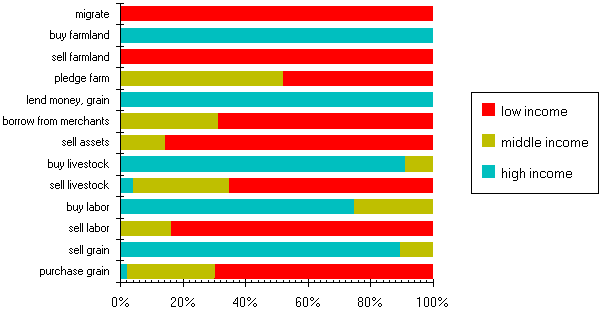

The germane question to be asked at this juncture concerns the effects of international food aid. While food aid disbursements save lives in the short term, what will be the long-term impact of undercutting this indigeenous exchange of wealth? Will middle-income households be able to withstand the rigors of a multiyear drought, or will donors find themselves locked into a seemingly perpetual cycle of giving, only to find matters slowly deteriorating over time?
The Table of Contents of my work on Sahelian food security is available.
 Back
Back  Forward to Environmental Security
Forward to Environmental SecurityThis site last updated July 14, 1997.